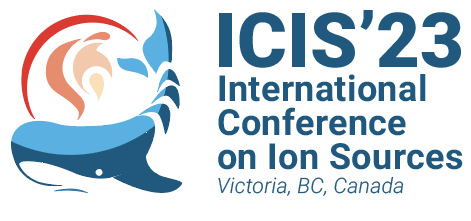Speaker
Description
A room-temperature electron beam ion source/trap has been designed and constructed at the National Institute of Standards & Technology (NIST). Its peak magnetic field of 0.67 T is generated in an extremely compact architecture by embedding strong rare-earth (NdFeB) magnets within the drift tubes, which are partly constructed of electrical iron. Six ports in the midplane are available to facilitate the production of highly charged ions (HCIs) and to perform spectroscopic experiments using the intense electron beam to excite the trapped ions. For instance, precise spectroscopy and tests of atomic theory can be made utilizing a Transition-Edge-Sensor (TES) x-ray microcalorimeter, as have been done with the 192-pixel TES spectrometer recently installed at the NIST EBIT (a superconductive 3-T device) in Gaithersburg, Maryland. The new portable system will be installed at another NIST campus in Boulder, Colorado, where the Quantum Sensor Group is developing a new generation of TES sensors. This NIST-Boulder EBIT (B-EBIT) is also an ion source that can extract a wide range of charge states for various applications, such as investigations of HCIs with forbidden atomic transitions that are potential candidates for very stable optical frequency standards. A convenient feature is the minimal space required by integrating the permanent magnets and the electrodes into a single stack that can fit entirely in off-the-shelf vacuum chambers. In this presentation, we discuss the main characteristics, as well as some tests of its operation using a time-of-flight microchannel plate on axis and a silicon drift detector in the midplane.
| Funding Agency | U.S. Dept. of Commerce/ NIST |
|---|---|
| Email Address | joseph.tan@nist.gov |
| I have read the Code of Conduct to attend ICIS2023. | Yes |
| Presenter if not the submitter of this abstract | Joseph Tan |

